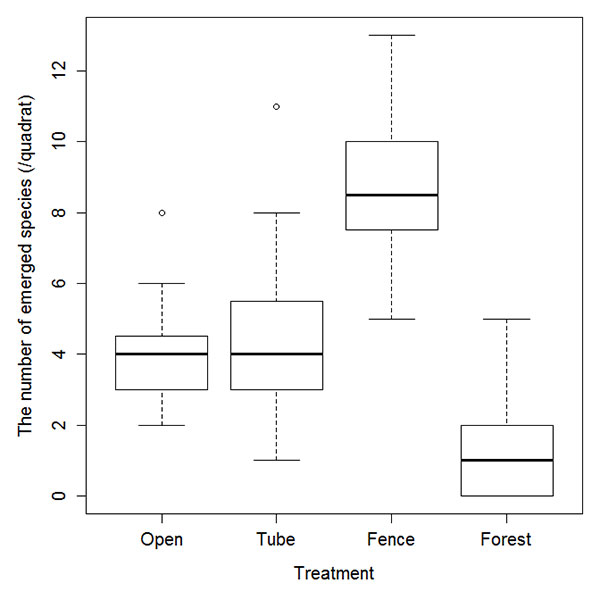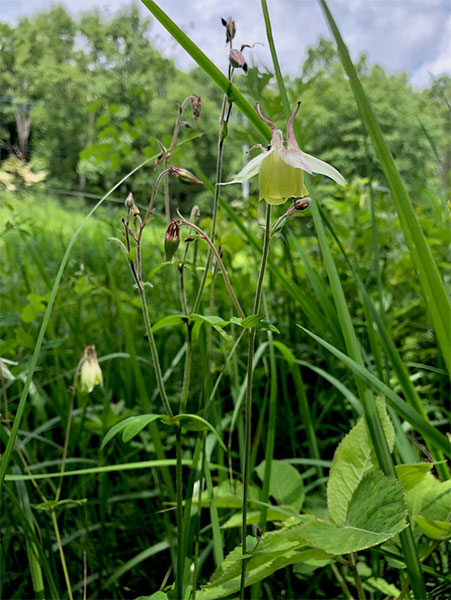Home > Research > Research Results > Research Results 2018 > Forest logging alone is insufficient in protecting the diversity of grassland species
Update:October 26, 2018
Main content starts here.
Forest logging alone is insufficient in protecting the diversity of grassland species: importance of preventing feeding damage caused by deer
| Article title |
The method of conserving herbaceous grassland specialists through silvicultural activities under deer browsing pressure |
|---|---|
| Author (affiliation) |
Hayato Iijima (a), Chiaki Otsu (b) (a) Forestry and Forest Products Research Institute,FFPRI, Tsukuba, Ibaraki, Japan. |
| Publication Journal |
Biodiversity and Conservation. September 2018, DOI:10.1007/s10531-018-1577-z( External link ) |
| Content introduction |
In recent years, reports have indicated that a decline in human activities in rural mountainous areas has resulted in a decrease in or extinction of the populations of herbaceous plants, such as Iris sanguinea and Aquilegia buergeriana (Figure) (hereinafter, “grassland herbaceous species”). Amid these circumstances, the conservation of these species has become an urgent challenge. Forest logging has a possibility of not only creating brightly lit environments but also contributing to the conservation of grassland herbaceous species through a disturbance in the ground due to plowing and weeding following logging. However, there is a risk that the buds of plants that have sprouted through these efforts may only end up being consumed by the Japanese deer (Cervus nippon; hereinafter, “deer”), whose population has been increasing across the country. Then, what kinds of forestry operations are necessary to protect grassland herbaceous species? In an area densely inhabited by deer, we established plots that were subjected to clearcutting, clearcutting + weeding, and clearcutting + weeding + deer fence installation (hereinafter, “deer-fence plot”) as well as a control plot (Larix kaempferi plantation). Two years after clearcutting was performed, we investigated the vegetation of these plots and compared the species compositions and grass heights between them. We found that the number of new grassland herbaceous species that had emerged was particularly high in the deer-fence plot, wherein the grass grew taller than the other plots. In contrast, only species that increased in the clearcutting plot and the clearcutting + weeding plot were plants that are disliked by deer or resistant for deer browsing. The number of other grassland herbaceous species did not significantly increase. These results suggest that taking measures against deer consumption is an integral part of the conservation of grassland herbaceous species. In areas densely inhabited by deer, preventative measures must be taken so that deer cannot eat conserved plant species in addition to logging. With more and more forestry operators being forced to factor in the presence of deer, the results of this study may provide a rationale for performing sensible forestry operations that Notes Open: clearcut without deer countermeasures and mowing
Picture: Aquilegia buergeriana, a grassland herbaceous species. |
Copyright © Forest Research and Management Organization. All rights reserved.


